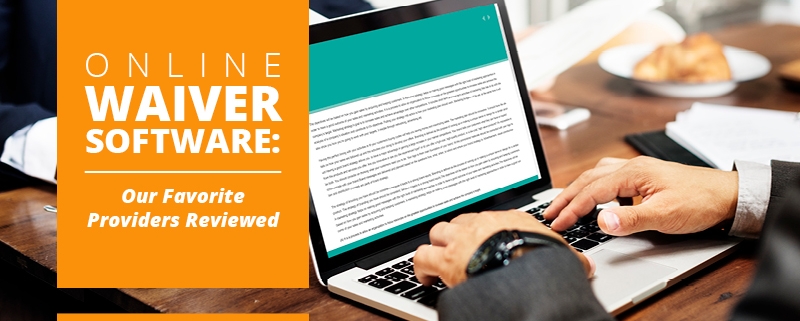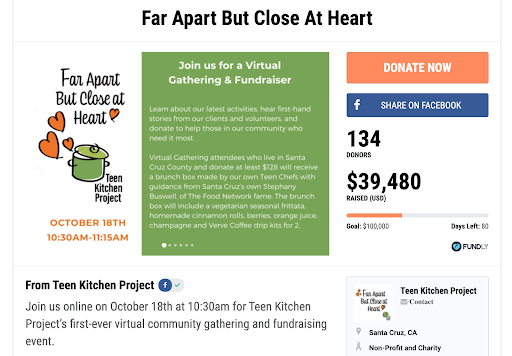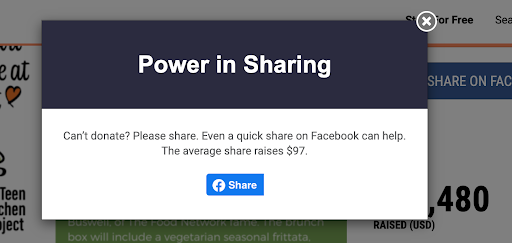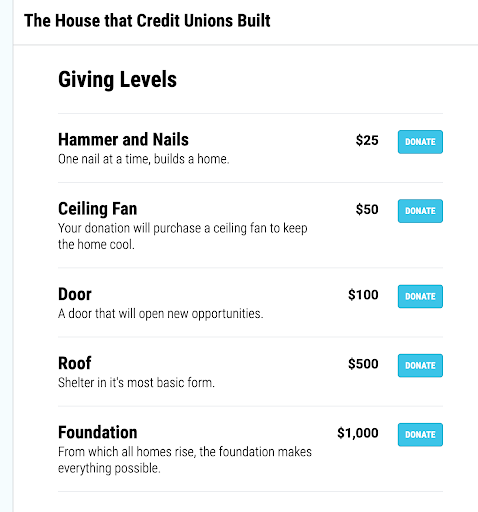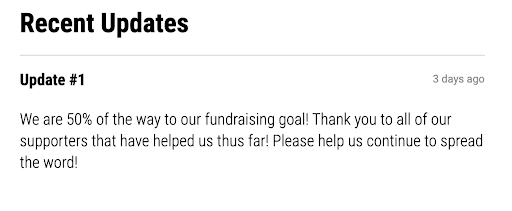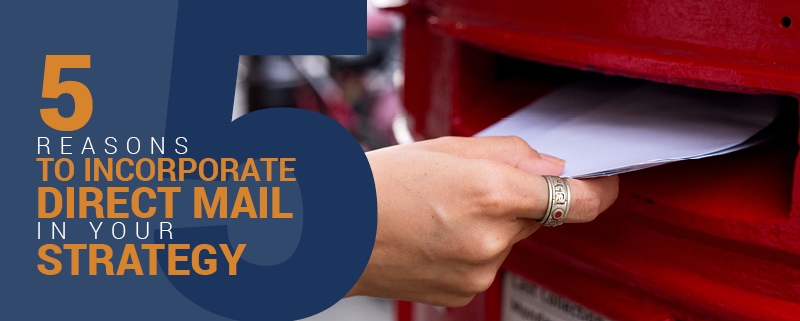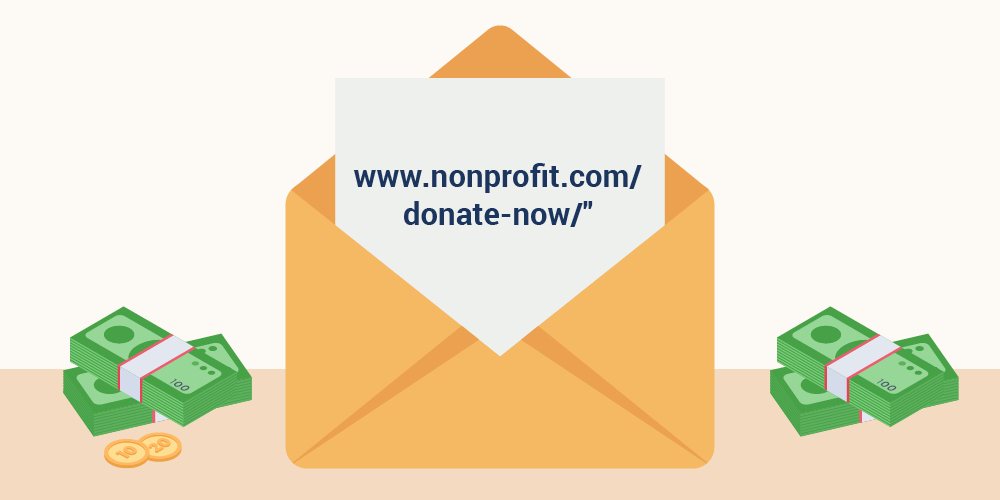Maximizing the Success of Your Virtual Event Donation Page
by Kate WhiteIt’s no surprise that in 2020 alone, the number of organizations hosting virtual events has doubled. With a global pandemic on our hands, nonprofit organizations needed to find a way to step up and get donors to show up— all in a virtual world.
Based on the Virtual Events Research Report, creating a donation page is one of the most effective donation tactics you can use at a virtual event. Sounds easy enough, right? Shockingly, only 25% of those surveyed were actually following through and creating a page. And even more, only 8% of respondents were using peer-to-peer fundraising or crowdfunding efforts to gain additional revenue.
This begs the question: Why are so many organizations leaving money on the table?
But your organization is different, because you’re here and you know what to do for your virtual event’s donation page. At least, you will after you check out these seven best practices for creating a donation page so good it will help your organization raise as much money as possible during your next virtual event. Here’s to 2020 showing us just how adaptable and agile nonprofiteers like you can be.
Best Practice #1: Tie Your Donation Page to the Event.
You already know that people respond well to content that’s catered to them. This is the reason targeted advertising exists, or email marketing campaigns with your name in the subject line. When it comes to your virtual event, the donations you receive related to your event are no different. They’re special and you should call that out.
You’ll want to create a special event page that ties in donations raised specifically from the virtual event. Take this page as an example from the Teen Kitchen Project. Notice that the page calls out how many donations have been given as a result of this campaign, how far the organization still has to go to reach their goal, and more information about the organization and the fundraiser itself.
In addition, remember to create a sense of urgency. A great way to do this includes adding pop-ups like the one seen below. This tactic ensures the donate button is front and center multiple times throughout the potential donor’s journey to explore your event page.
Other examples to create a sense of urgency include adding a countdown showing when the virtual event ends. Tell your potential donors why it’s vital that you get the resources you need right away. Make sure to use language that evokes emotion from your donors.
Best Practice #2: Make it Shareable.
They say sharing is caring, and your organization should definitely care about your attendees sharing! Amplifying your efforts can happen more and more if you have made it easy for virtual attendees to spread the good news.
One way to do this? Include easily clickable buttons for social sharing. If possible, pre-populate a status that your event participants can quickly edit to make their own. Making it as easy as possible to share increases the likelihood that your supporters will.
This is also something important to work into your peer-to-peer fundraising. Encourage your participants to share, share, SHARE. There’s no such thing as oversharing here (well, as long as it’s about your organization). The key is to make it easy for your supporters to share the event.
Then, you’ll want to continue to share your page during the event. Make sure to encourage your event participants to do the same.
The popup that appears can encourage people to share, especially since social sharing has proven time and time again to be a valuable way to garner support.
Best Practice #3: Make Donation Levels Clear
Sometimes, lack of instruction can lead to lost donations. If it isn’t easy and it isn’t clear, you’re bound to lose donors quickly. Since things are moving fast during a virtual event, it’s imperative that you outline donation levels and what they mean.
Remember that you’ll want to be as clear and concise as possible about what it is your organization needs and how donors can fill that need.
Clearly indicating which amounts provide what on the donation page itself, like on this page, can help supporters make up their minds more quickly. As an added bonus, it may even encourage potential donors to give more when they see the needs they’re filling. So not only should you list the amount, but put it into perspective for your potential donor by outlining what that donation means.
Best Practice #4: Add Personal Touches
Don’t forget the essence of what fundraising is all about—the actual cause. It’s easy to get wrapped up in the technical event planning process and forget that the most important takeaway is that you connect with potential donors on the cause.
There are two aspects to every virtual event and the donations you receive. One is the technical aspect of pulling off a virtual event donation page. For example, how easy is it for your potential donors to get involved, donate, and share. The other is to remember that you have to pull at their heartstrings and relate with them on a personal level to connect in a way that garners their support.
Once you’ve done all of the technical aspects of getting your donation and event page ready, read through as if you’re a potential donor who has never heard of your organization. Ask yourself—would you be compelled to give? Does the message of what your organization stands for shine though? If not, it’s time to go back in and add some love to the page.
Added bonus—as you’re gearing up for your event check out these live streaming tips. Once the streaming is over, add the video to your donation page for a personal touch. Don’t let the fear of technology keep you from hosting your best event yet.
Best Practice #5: Make Donating Easy
We’re asking you to keep it simple. Your donors shouldn’t get frustrated trying to navigate donating to your organization. Sometimes, organizations can be standing in their own way. So make donating online easy. We’re talking easy to navigate, easy to fill out the form, and just plain simple all around.
Make sure that you’re gathering the least amount of information necessary. If possible, allow payments with popular one-step apps like Paypal or others.
Best Practice #6: Update Your Donors
If a tree falls in the forest and nobody hears it… well, you know the rest. Your donors should always be informed of the larger goal you’re trying to reach. Why? Because they’re interested, they want to help, and they will do anything to keep spreading the word. Your small reminders will help nudge them toward giving again or finding peers that will.
If you’ve been fundraising prior to your event, keep track of how close you are to your goal. That way, during the event, you can let them know how much is left to raise and ask them to help you to hit your goal.
You can reach out to your donors via email, social media, or by including updates on the donation page itself like this example.
Remember that if you never try, you’ll never know the success you could see. According to our 2020 virtual events research report, only 10% of respondents who had already run virtual events said that they were unsuccessful. However, those who didn’t try to engage attendees were 150% more likely to be unsuccessful — so make sure to continue engaging your attendees!
This can also help build engagement and excitement as your supporters see how they’ve contributed to getting you closer and closer to your goal.
Best Practice #7: Provide Next Steps
So you’ve followed all of the steps and hosted a successful virtual fundraiser. Now what? It’s easy to forget about next steps with all of the excitement and anticipation surrounding the event. But as a nonprofit professional, you always have to be one step ahead.
Make sure to use your donation page to capture information so you can follow up with attendees, participants, and donors after the event. Simply use an email capture box or pop up to let them know you want to keep them involved in your organization. Somebody may be incredibly interested in your organization, but unable to donate or volunteer at this time. This allows you to cultivate the relationship over time.
You’ll want to let them know the final totals (as mentioned in best practice #6!), but also let them know about additional ways to stay updated and get involved with your organization. Don’t forget to ask all attendees for feedback on how to improve the next event.
As nonprofit professionals agree, a donation page for your virtual event is a sure way to increase your fundraising revenue. So what’s standing in your way? Putting in the effort will take your organization further in our increasingly digital world.
Remember that although donation pages are one of the best ways to fundraise during virtual events, they’re not the only way. For more virtual events fundraising ideas and other virtual event best practices, make sure to check out our 2020 virtual events research report.
Best of luck with your virtual events!
This was a guest post contributed by Wild Apricot.
5 Reasons to Incorporate Direct Mail in Your Strategy
by Kate WhiteDirect mail is the backbone of many nonprofit fundraising strategies. Over 90% of direct response revenue to nonprofits comes from direct mail. Even if your organization is using other channels already, a multi-channel approach is the most effective way to bring in revenue for your organization and maximize your ability to do what you do best – serve your cause.
But maybe you’ve been told that direct mail is a dying strategy and you’re not sure whether you want to invest your fundraising dollars that way. If you’re looking to get started with a fundraising campaign and want to learn the best ways to ask for donations, here are four key reasons why direct mail is the answer.
1. Increasing response rates
Direct mail has the highest response rate of any fundraising channel; in fact, response rates to direct mail can be 10x higher than other channels such as email or social media ads. While direct mail also costs more to send, these higher response rates make direct mail an attractive way to keep high-value donors active with your organization and engaged with your cause.
Higher response rates also mean that more fundraising revenue is coming to your organization. More money means more capabilities for your organization and a greater reach for your cause.
2. Keeping your organization top-of-mind
Direct mail is also the most memorable channel for recipients. Even in cases where the recipient isn’t sending a donation back, keeping your organization in the mind of the donor makes them more likely to give in the future.
Sending out direct mail appeals regularly keeps your cause in the eyes, minds, and hearts of your donors. For more information, see GivingMail’s guide to direct mail for nonprofits to understand just how powerful direct mail can be.
3. Allowing for a personal touch
Direct Mail continues to feel more personal, helping it create a deeper connection between your donors and your organization. People like seeing their names referenced in communications and relate best when they are directly addressed. This gives direct mail the advantage of being the most opened, most responded to, and most relatable type of appeal you can send to your donor.
Personalization is also key to maximizing the value of direct mail appeals. Now, personalization is more a necessity than an option if you want to get the greatest connection and greatest response to your fundraising campaigns. Personalization is just one of many best practices for a fundraising letter.
4. Targeting older audiences
While direct mail remains a top-performing channel for all age groups for marketing and fundraising purposes, it’s especially useful in targeting older demographics. Older audiences have even higher affinities for direct mail, and the gap between responsiveness between channels grows with age.
Direct mail fundraising appeals that apply best practices are the single best way to drive revenue for your organization. You’ll want to make sure that your appeals are written in a way that appeals to all your demographics, or that you are segmenting your audiences and sending tailored appeals, to ensure that your results are maximized.
5. Pairing well with online campaigns
While direct mail fundraising can function as a standalone campaign, it’s important to point out that it can also work very well as an additional touchpoint for tons of other types of fundraisers.
For example, imagine you’re hosting a crowdfunding campaign. You’ve created your online campaign on a top crowdfunding website and now you’re ready to start promoting it and watch those donations pour in. You appreciate the flexibility and convenience of an online fundraiser (and a crowdfunding one in particular), but you’re looking for a way to bring your campaign even further.
That’s where direct mail comes in handy! By sending out direct mail appeals to your top supporters, you can encourage them to check out your crowdfunding campaign and make a virtual contribution.
To make the conversion process even easier for your direct mail recipients, be sure to include the URL for your online campaign (or perhaps even a QR code!). That way, readers will know exactly how to respond and support your fundraising efforts.
Direct mail has many purposes in a nonprofits’ strategy. If you neglect this critical fundraising channel, you never know how much potential revenue you might be giving up!
Author Bio
This guest post was contributed by GivingMail.
Grant Cobb is a fundraising specialist with over 6 years of experience in the nonprofit space. Currently the head of marketing and analytics at GivingMail, he is a huge proponent of data-driven decision making and the push to bring high-level analytics and fundraising to all.
Campaigns Suspended, Removed, or Unable to be Found
by Kate WhiteWhy might a campaign be suspended, removed, or unable to be found?
Fundly often receives questions about decisions to suspend (and in some cases, re-activate) campaigns of an inflammatory nature. While extremely rare, there may be situations where a campaign violates our Terms of Use:
- Fundly does not condone obscene, offensive, or indecent content or images on its sites or services. This includes cursing, name-calling, or making defamatory, threatening, or inflammatory remarks.
- Fundly does not endorse the ideas or opinions of any one campaign. While many campaigns may be controversial, it is our policy to allow any campaigns that do not violate our terms of use.
- Fundly does not allow users to post links to campaigns on competitors’ websites.
- It is at Fundly’s sole discretion to decide whether or not a campaign meets our standards.
Campaigns may also be suspended or reviewed if they are suspected to be fraudulent or illegal in nature (for example, campaigns that were not approved by the person or family they claim to be fundraising for). Campaigns may be temporarily suspended during an investigation as we do our due diligence. In cases where Fundly suspends a campaign, we always reach out to the campaign owner to explain why.
Campaigns may also be removed at any time by their owners. Fundly does not control or take responsibility in these cases.
What do I do if I see what I believe is a fraudulent or illegal campaign?
Contact us at [email protected]
What happens once I report a campaign?
Our team responds to customer requests every day to investigate and review campaigns. Our priority is always to reach out to campaign owners to discuss any questions or concerns around their campaign, let them know what pieces of the campaign are in violation of our Terms of Use, and what they need to do to correct violations. Campaign owners get 24 hours to make their changes. If changes are not made, campaigns are permanently disabled.
A campaign I donated to has been removed. What happens to my money?
In most cases, the campaign owner retains any funds already raised and can view and withdraw the funds via Stripe even if their campaign is removed. Once a donation has been made, you must reach out to the campaign owner directly if you would like a refund.
When a fraudulent campaign is identified, Fundly will refund all donations collected (that have not been withdrawn by the owner) to those who have participated.
A campaign that was taken down is back up again. Why?
Once our team has investigated a campaign and reached out to the campaign owners, campaigns are often edited to meet our Terms of Use. In these cases, Fundly’s policy is to let campaigns continue.
To those who have offered words of support to our staff, our team says a huge thank you for understanding the difficult decisions we’re often required to make. We thank all Fundly users for extending each other a measure of patience, tolerance, and grace as we navigate these difficult times together.
Crowdfunding Resources
Fundraising Resources:
Popular Resources

Fundly is dedicated to providing you with the tools you need to raise money for whatever your cause may be.


